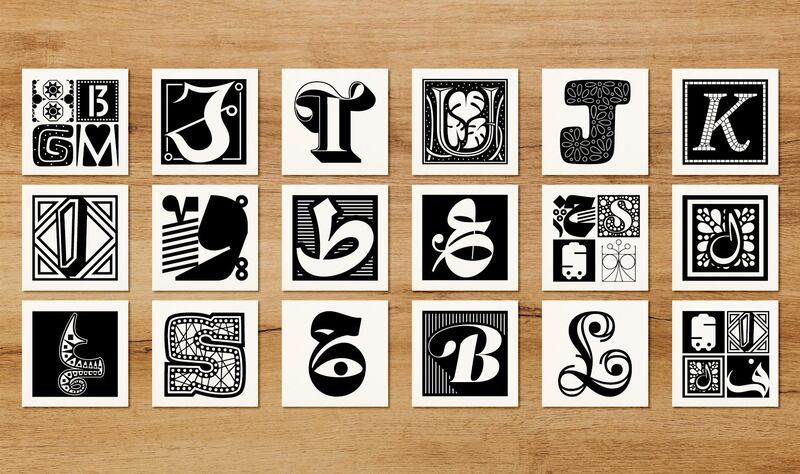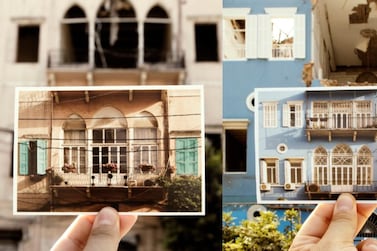More than 160 regional and international designers have rallied to create a new typeface, Li Beirut, which is helping to raise funds for the people of Beirut.
The font, which includes 300 decorative glyphs of isolated Arabic characters and Latin capital letters, was commissioned by Nadine Chahine, the lead designer behind the popular Dubai Font, days after the explosion that rocked Beirut's port on August 4.
The blast, Chahine says, marks a collective trauma for the Lebanese people, who are already facing an economic crisis as a result of years of corruption within the government.
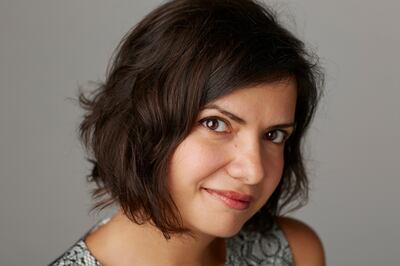
"Even outside the context of everything that's going on, the explosion is a traumatic event. But when you add an economic crisis, a pandemic and a political crisis, when you consider the fact that people are unable to access their own money in the bank. When you consider the liquidity problems. It's just unbelievable," she says. "I lived the first 11 years of my life during the civil war and I've never seen Lebanon in such a dire state."
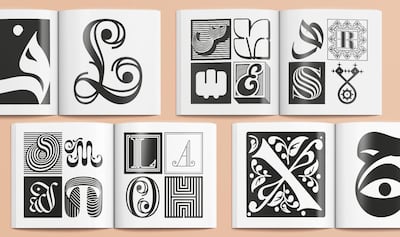
This is not the first time typeface designers have come together to create a font to raise funds. Previously, the Society of Typographic Aficionados organised eight iterations of Font Aid, a charity drive that responded to a number of global tragedies, including the Nepalese earthquake in 2015 and the 9/11 attacks in 2001.
Chahine says Font Aid proved that typefaces could be used as a fundraising apparatus and gave her the inspiration to start Li Beirut. She wanted to ensure that if the font was going to bear the name of the Lebanese capital, it was something special.
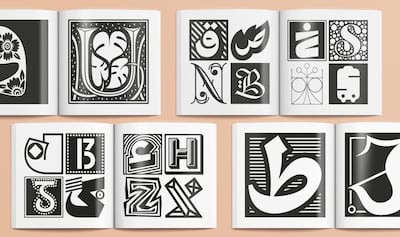
"It felt like it was necessary that this would be something that comes out of the Lebanese community. That it was driven by Lebanese designers working alongside those from around the world," she says.
"I immediately started emailing designers I knew and they helped me get the word out." This was less than a week after the blast.
The criteria for submissions was simple: the glyph could be a decorative letter in Latin or in Arabic, and needed to be in a square format, to ensure aesthetic cohesion. The deadline was set for Friday, August 14, five days after Chahine posted the fundraising call.
Please go and support @FontLiBeirut
— Khajag Apelian (@debakir) August 23, 2020
thank you @arabictype for making all this happen! thank you @M_AL_khouli for the animation! https://t.co/ioCDzMiuui
“I think when it comes to fundraising, it’s important to be quick and act when the event happens. People are more likely to donate," Chahine says.
That quick response could also, perhaps, explain the number of creatives who came on board.
The collaborative nature of the Li Beirut font fundraiser has been a unique experience for Chahine, who says she never expected this many designers to contribute so promptly.
"I was shocked by the amount of empathy," she says. "Many submissions came with messages of support to the people of Beirut."
Esteemed designers from the Arab world, including Mamoun Sakkal, Khajag Apelian, Yara Khoury and Wael Morcos, were among the contributors. Award-winning designers from around the world – such as Jean Francois Porchez, Jessica Hische and Erik Spiekermann – were also quick to answer to the submission call.
The end result is a font of more than 300 characters that, besides decorative Arabic and Latin letters, includes Arabic numerals as well as a few symbols. "They are all in one file, and it's a perfectly working font, which means people can use this font in projects, and the word combinations are gorgeous."
Where else can you find a typeface with contributions by @espiekermann @jessicahische @frerejones @hvdfonts @typofonderie @martinmajoor @MartinaFlor and @letterror? Thank you for your support!
— Font Li Beirut (@FontLiBeirut) September 6, 2020
ß by Erik, M by Jessica, U by Tobias, and D by Hannes.https://t.co/EOFhIVGeUF pic.twitter.com/quFXEQktJN
This also separates the typeface from other fundraiser fonts. Previously, typefaces that have been created to raise funds have been a collection of symbols as opposed to a functioning font.
"There's something special about that. The characters all have different flavours. Each one is unique. When you pool them together, there is something appealing on a conceptual and symbolic level. That you can harmonise all these various styles. This is a very important message, whether in Lebanon, which is stricken by dissent and various factions not working together, or internationally."
Chahine says it took "every waking moment of two weeks" to ensure the submissions were compiled in time. "I was thinking, OK, I'm really tired, but you know, there are people sweeping glass in the streets in Lebanon. I can do this, I can just sit on my computer and work. It's fine."
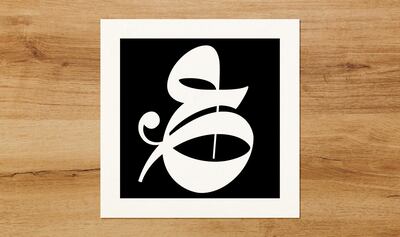
On Tuesday, August 18, two weeks after the Beirut port blast, the typeface was launched. “Now, we are printing the catalogue and the postcards,” Chahine says. “That’s an important aspect as well, that they are being printed in Beirut. There’s a symbolic aspect to that.”
The font, on crowdfunding website Indiegogo, has now raised more than Dh64,000, almost half of its Dh130,000 mark. Two options are offered to those who are donating. A Dh96 donation to access the Li Beirut font file, or a Dh227 option for a 60-page catalogue and a set of 18 postcards, as well as the font file.
All funds will be given to UK-based charities Plan International, Action Against Hunger and Save The Children, all of which have launched relief operations in response to the Beirut blast to support some of the worst-hit families and children.
Though the fundraiser on Indiegogo wraps up on Friday, September 18, Chahine says she intends to start a dedicated website for the Li Beirut typface, as well as put it up on font-licensing websites.
"I didn't know what to do with the font once the fundraiser ends," Chahine says. "There seems a lot of love for the design and if it can continue to raise money for Beirut after the fundraiser ends then why not?"
The font can be bought at www.indiegogo.com/projects/font-li-beirut#/
